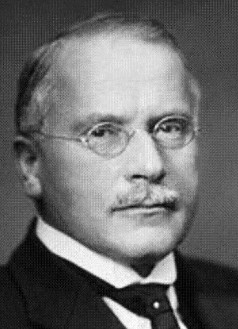Jungians
For Jungians, the fact that the Vampire developed in nearly every culture in the world at the same time without contact amongst developing humans is both proof of the vampire as the archetype (“an inherited pattern of thought or symbolic imagery derived from the past collective experience”), but also proof of Jung’s concept on the Unconscious Collective.

The concept of vampires and vampirism indicated that vampires are not mere stories or explanations created by personal experience or folk tales, but are in fact a species-wide psychological structure that all humans share in primitive thought.
The Jungian interpretation of the vampire assumes that all humans have a vampire inside of them. What this means is that Jungian believe vampires are an intuitive concept to the human psyche. Something we understand in some way, shape or form, from the moment we exist into this world. Vampires reflect significant issues universal to all human life.
The content of the Collective Unconscious is mainly archetypes; some archetypes occur in a particular society or time period, others are the same in all societies and times. The archetypes may find expression in myth and fairy tales, the most common and influential archetypes being the shadow, the animus, and the anima. Every human being also has a personal unconscious, in which material is stored that was once conscious but has been forgotten or repressed. The personal unconscious adapts archetypes based on the individual’s experiences. The personal unconscious finds expression in dreams and metaphor.
For Jung himself, the vampire was the representation of a psychological aspect he called, “the shadow.” The Shadow is made of aspects of one’s self that the conscious mind and ego were unable to recognize. The shadow was primarily negative concepts, such as repressed thoughts and desires, out anti-social impulses, morally questionable judgment, childlike fantasies, and other traits we normally feel shame for expressing or thinking.
Jung refered to Emily Brontë’s Wuthering Heights to illustrate the concept of the Shadow and the possession. Cathy has a shattering revelation of vampiric possession when she cries, “I am Heathcliff !”.
In Jungian psychology, Heathcliff is part of Cathy herself, a personification, of the animus, which possesses her psyche. Jung describes this kind of possession in Volume 7. He specifically mentions a vampire, and describes a vampiric process,
“When unconscious contents are not realized they give rise to negative activity and personification, i.e. the autonomy of the anima and animus. Psychic abnormalities then develop, states of possession. In this state the possessed part of the psyche generally develops an animus or anima psychology. The woman’s incubus consists of a host of masculine demons; the man’s succubus is a vampire.”
“… an unknown something has taken possession of a smaller or greater part of the psyche, and asserts its hateful and harmful existence undeterred by all our insight, reason, or energy… thereby proclaiming the sovereign power of possession.” Jung then states, “the archetype fulfills itself not only psychically in the individual, but also objectively.”
Jung himself describes this shadow self as:
“The Shadow is a moral problem that challenges the whole ego-personality, for no one can become conscious of the shadow without considerable moral effort. To become conscious of it involves recognizing the dark aspects of the personality as present and real.”
Jung interpreted the vampire as an unconscious complex that had the ability to taken over the conscious mind by means of “enchanting” the psyche or akin to what we might label a spell.
The vampire became a key fixture in society according to Jungians, because it became a mental scapegoat of sorts. It allowed humanity to project the negative aspects of ourselves onto something we could both openly revile and admire without actually acting out the desires and impulses ourselves. The vampire acts in the way humanity wishes it could, but can not due to social restraints.
Jung also added that there are other traits the vampire possesses, such as auto-erotic, and narcissistic traits, as well as a personality that is predatory, anti-social, and parasitic.
